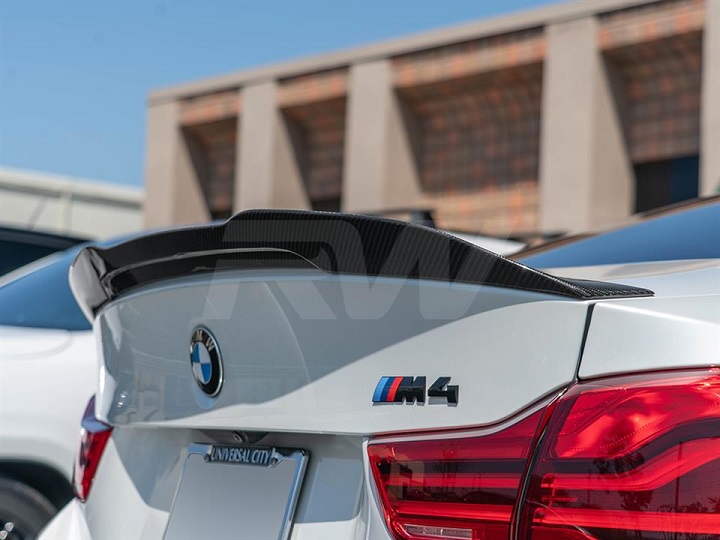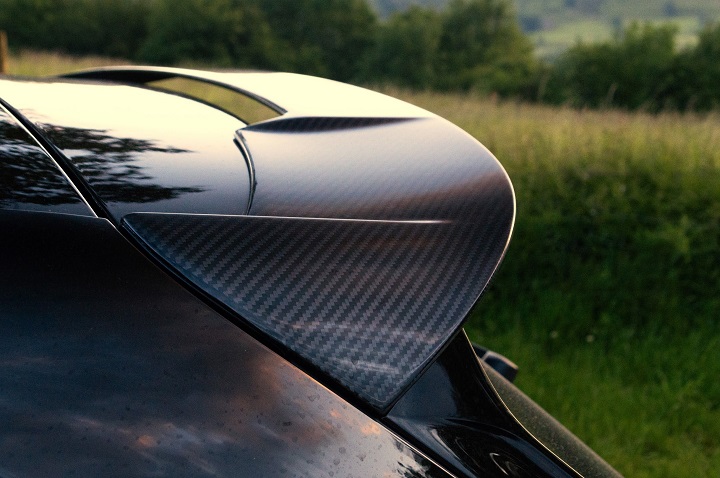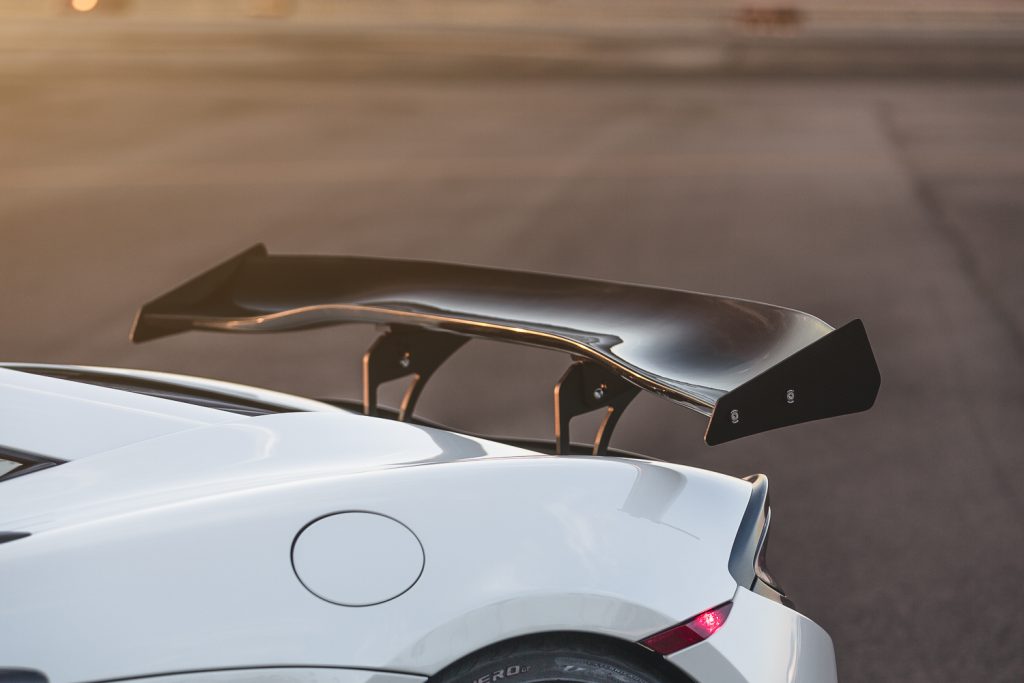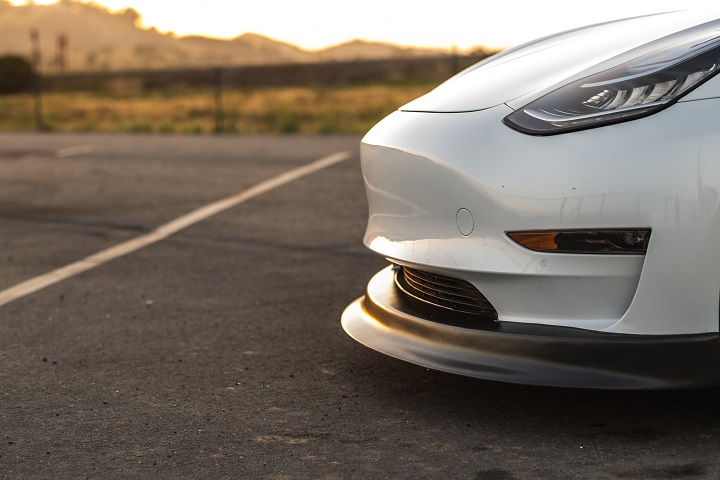Tips for Choosing Spoilers for Your Car
Adding a body kit to your car can serve two purposes. The first is visual appeal, with different parts emulating the look of one-off performance machines. The second is to gain an aerodynamic advantage. When done right, the same parts can be equally good for both uses. Besides standing out from the crowd of similar-looking cars, front and rear spoilers, splitters, wings, diffusers, side skirts, and other additions can improve handling by increasing the grip going through the tyres, improving stability at high speeds and when negotiating turns.
Why the Need for Spoilers?
Spoilers started appearing in the 1970s, first in race cars and the trend eventually made its way into production vehicles. Their main use is to spoil and redirect air that can increase resistance or drag, and affect stability, primarily with lift. While front spoilers or air dams are incorporated into the front bumper and disperse oncoming air under and to the sides of the car, it’s rear spoilers that are what most of us think of. These are designed and sized differently (and for different racing purposes) to reduce drag resulting from leftover air travelling over the car. In effect, a rear spoiler increases downforce at the rear axle, and this in turn keeps the car stable at high speeds and when cornering and aids with shorter braking distances. An added bonus is that the reduced drag coefficient, or how ‘aero’ a car is also helps to reduce fuel consumption. This may be subtle but is still there.

Spoilers for Go and Spoilers for Show
Rear spoilers need to take into account the overall design and aerodynamics of the vehicle, the power numbers the engine churns out, and how wind resistance affects the car at different speeds. Combined, these factors will affect the size and design of the spoiler, optimal placement and the materials that better serve the spoiler’s main purpose – to reduce drag. And this divides spoilers into two categories – those for go or outright performance akin to what you’ll find in race cars, and those for show, or body part additions that just look good, and not much else.
The first type is covered by a carbon fibre spoiler or more accurately a carbon fibre-reinforced polymer. The alignment of the carbon fibres into a woven fabric is what gives the parts their distinct look, in addition to being very lightweight yet extremely strong. A rear spoiler in carbon fibre is what’s found in purebred racecars, as this can take the forces acting on it at higher speeds and still push the weight of the car down towards the road. Pre-pregged or epoxy-mixed carbon fibre is the material to go for if you’re after ultimate strength.
Prices of carbon fibre body kits were once the reserve for those with deeper pockets. Today though prices have fallen sharply due to the availability and more brands using carbon fibre in their lineups. An advantage is the smooth and textured appearance the parts give off, being clear coated, so don’t require painting unless, of course, you want to.
While carbon fibre spoilers are still the most expensive option, prices can add up when complementing rear spoilers with other body kit parts to retain the expected performance and maintain the clean look. Cheaper materials, like ABS plastic, polyurethane and fibreglass will (largely) provide the appearance you’re after but fall short when on the track. Fibreglass rear spoilers are the cheapest of the bunch, lightweight like carbon fibre, but lack the superior material’s flexibility, meaning they’re prone to cracking or shattering under pressure.
One rung higher up are polyurethane spoilers, which offer more strength at the cost of weight. They do however have decent flex, and need less work in fitment, installation and painting. A good comprise is ABS plastic, a material used in factory bumpers, as this is both relatively lightweight and strong, but comes short in rigidity when compared to a true carbon fibre spoiler. For racing applications at high speeds, and when you need better road holding, go for carbon. For all other cases, choose one of any three mentioned materials.

Sizing and Types of Rear Spoilers
Spoilers can be subtle and still provide a performance boost, or literally spoil (pun intended) both the appearance of the car and create additional drag, and even lift. Sizing and placement are crucial in this sense. Each spoiler is designed with the characteristics of each vehicle, such as shape and length as well as acceleration and top speeds, and is sized accordingly. Bigger-than-usual spoilers are more about street presence than anything else and will add more weight at the back in addition to drag if too high.
When considering location, trunk and trunk lid spoilers are the most common types, but subtle roofline spoilers are also found on some hatchbacks. Spoilers can also replicate the distinct look of in-house or affiliated tuning houses, such as Mugen/Honda, AMG/Mercedes, Nismo/Nissan or M-Performance/BMW, but without the typical price. If you own a base-spec car but still want the looks of cars higher up the range, then this is one way of getting that done.

Pairing Rear Spoilers with Other Body Kit
Optimal aerodynamics is achieved when rear spoilers are combined with other parts. These include front spoilers and splitters that spoil and redirect air hitting the car head-on, side skirts to prevent the buildup of air under the car, and diffusers that redirect the remaining air below. A full-body kit is a precise piece of engineering that needs to fit the car down to the millimetre. For the best results, consider a professional fit. This can be done at the same shops selling spoilers and other aerodynamic additions.

